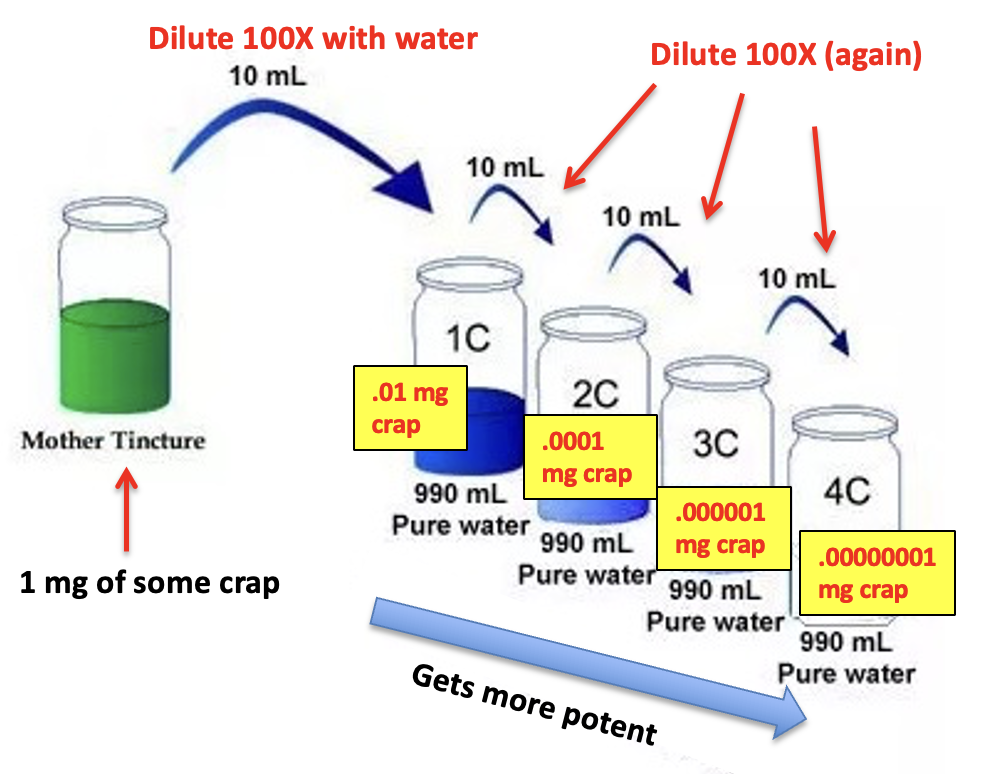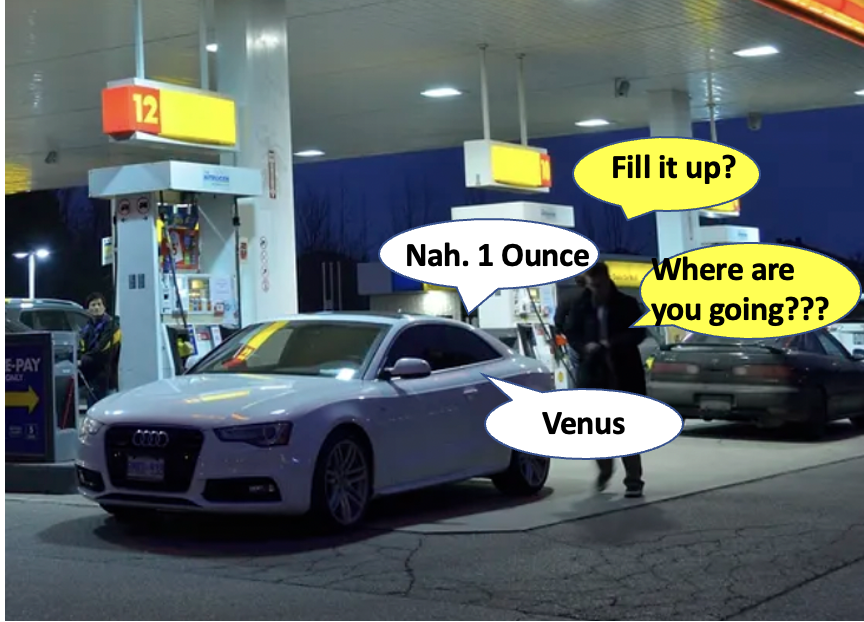A "friend" of mine is having some cosmetic surgery. He/she/her/him/them/it has been given a take-home kit for post-surgical care. It contains everything you'd expect – antibiotics, pain medications, skin creams, bandages, and a few other supplies. And also a totally useless item. It's a tube of tiny pills called Arnica, which is supposed to be helpful in reducing bruising and minimizing scarring.
What's the problem with Arnica, an herb used in "integrative" medicine? After all, there are plenty of herbs with medicinal value. Perhaps I'm not giving it a fair chance. Wrong. The problem is that it makes no difference whether Arnica has any real value in treating wounds if there isn't any in the pill, which is precisely the case.

Image: Wikipedia
What's wrong? Why is that guy laughing? It's because of that strange-looking "30C" thing, which seems to have something to do with the dose. What does 30C mean? Bottom line: it means that there isn't any Arnica in there (more on that later), just two sugars - lactose and sucrose. Placebos are often called "sugar pills," even though they might not be in pill form or contain sugar. But Arnica is a true sugar pill. There isn't anything else in there.
To understand what I'm talking about, you need to know what 30C means. It's a homeopathy term, which was coined in the 18th century. Knowing this, you can now skip to the end of the article unless you want to understand why people will pay 20 bucks for a bottle of nothing while I mercilessly make fun of the whole thing. Stick around. It will be fun.

In homeopathy, the letter "C" is called the dilution factor. Unlike everything else in homeopathy, the use of this letter makes sense because it stands for the Roman numeral C, for 100. So, to make a 1C solution of [whatever], you take an original solution (often called the "mother tincture") and dilute it 100-fold with water, which may also contain alcohol. If the mother tincture contained 1 mg of [whatever] in 1 liter of water, then the 1C solution would contain 0.01 mg. Likewise, a 2C solution is 10,000 times more dilute than the original stock solution and will contain 0.0001 mg. As this process continues, every serial dilution will produce a solution of (C+1), which will be 100-times more dilute than the previous solution. (Figure 1).

Original image: Skeptical Raptor
The demented beauty of homeopathy
I'm ranting about this because, according to homeopathic principles, the more dilute a solution is, the more potent it is, which is, to a chemist, simply lunacy. A real-life analogy: Putting less gasoline in your tank will enable the car to go further. Isn't it intuitively obvious that if you fill up your tank only halfway, you'll go twice as far? A quarter tank will get you four times further. Although this is supernaturally stupid, it's a pretty accurate automotive representation of homeopathy. (1)
But not accurate enough...

A homeopath heads home. AAA towing service is not available. Public domain image: Raw Pixel
If you look at Figure 1, you can see that by the time a dilution of 4C is reached, only 0.00000001 mg of the original stuff remains, so it won't be long before none is left. That occurs at about 13C, where there isn't even a single molecule remaining. Yet, that doesn't stop makers of homeopathic products from adding even more water to the water, making their remedies even more potent, hence the 30C. There are even dosage charts. This is where the true madness becomes apparent (Figure 2).

(Figure 2) instructions for selecting the "proper" concentration of a homeopathic product. Source: Homeo Source
According to Homeo Source, if you have symptoms that cause "great pain" - 3rd-degree burn, a head or back injury, or labor pains, take the more dilute (12C or 30C) stronger product. But if you're merely tired or anemic, then the more concentrated (but less potent) doses will suffice.
The Homeo Source people are either superb salespeople or truly deranged, just like anyone who uses a bottle of water to treat severe burns or head injuries.
Why zero Arnica "works"
Even homeopaths concede that at high dilutions (13+C), none of the original material remains. But they have a handy (and wholly deranged) explanation for why their crap works. The memory of water! One of the principles of homeopathy is that even when none of the original substance remains the water molecules it has encountered "remember" it was there and it is this memory that is responsible for the "utility" of the stuff.
As a chemist, I can tell you that water has a very poor memory as demonstrated in the cartoon below.

Contrary to homeopathic belief, water doesn't have such a good memory. Mike and Stan demonstrate just this.
Finally, it's a damn good thing that there isn't any Arnica in a 30C product; Arnica (the actual herb) is quite toxic:
"The plant is poisonous and ingestion can cause gastroenteritis, dyspnea, cardiac arrest, and death. The flowers and roots of the plant have caused vomiting, drowsiness, and coma when eaten by children."
Source: Drugs.com
Bunch of nonsense? Oh, yeah.
NOTE:
(1) If you want to read a thorough takedown of homeopathy, my colleague Dr. Joe Schwarcz, head of the McGill University Office for Science and Society, takes this a little more seriously.




